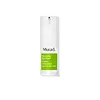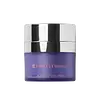What's inside
What's inside
 Key Ingredients
Key Ingredients

 Benefits
Benefits

 Concerns
Concerns

 Ingredients Side-by-side
Ingredients Side-by-side

Water
Skin ConditioningButylene Glycol
HumectantTricaprylyl Citrate
EmollientPentylene Glycol
Skin ConditioningBis-Diglyceryl Polyacyladipate-2
EmollientJojoba Esters
EmollientGlycerin
HumectantBoron Nitride
AbsorbentCaprylic/Capric/Myristic/Stearic Triglyceride
EmollientCetyl Alcohol
EmollientStearic Acid
CleansingGlyceryl Stearate
EmollientPEG-100 Stearate
Citrus Unshiu Peel Extract
MaskingMangifera Indica Seed Butter
Skin ConditioningDimethicone
EmollientCetyl Phosphate
EmulsifyingUrea
BufferingYeast Amino Acids
HumectantTrehalose
HumectantInositol
HumectantTaurine
BufferingBetaine
HumectantGlycine Soja Seed Extract
Skin ConditioningIris Florentina Root Extract
MaskingDioscorea Villosa Root Extract
Skin ConditioningGlycine Soja Sterols
EmollientTrifolium Pratense Flower Extract
AstringentPalmitoyl Oligopeptide
CleansingPalmitoyl Tetrapeptide-7
Skin ConditioningRetinol
Skin ConditioningSodium Hyaluronate
HumectantSerenoa Serrulata Fruit Extract
Skin ConditioningOenothera Biennis Oil
EmollientTocopherol
AntioxidantAscorbyl Palmitate
AntioxidantBorago Officinalis Seed Oil
EmollientDipeptide-2
Skin ConditioningHesperidin Methyl Chalcone
AntioxidantCaprylic/Capric Triglyceride
MaskingSodium PCA
HumectantPanthenol
Skin ConditioningOleyl Alcohol
EmollientSteareth-20
CleansingLecithin
EmollientCarbomer
Emulsion StabilisingPolysorbate 20
EmulsifyingSodium Potassium Aluminum Silicate
Aminomethyl Propanol
BufferingDisodium EDTA
Silica
AbrasivePhenoxyethanol
PreservativeCaprylyl Glycol
EmollientChlorphenesin
AntimicrobialCI 77891
Cosmetic ColorantWater, Butylene Glycol, Tricaprylyl Citrate, Pentylene Glycol, Bis-Diglyceryl Polyacyladipate-2, Jojoba Esters, Glycerin, Boron Nitride, Caprylic/Capric/Myristic/Stearic Triglyceride, Cetyl Alcohol, Stearic Acid, Glyceryl Stearate, PEG-100 Stearate, Citrus Unshiu Peel Extract, Mangifera Indica Seed Butter, Dimethicone, Cetyl Phosphate, Urea, Yeast Amino Acids, Trehalose, Inositol, Taurine, Betaine, Glycine Soja Seed Extract, Iris Florentina Root Extract, Dioscorea Villosa Root Extract, Glycine Soja Sterols, Trifolium Pratense Flower Extract, Palmitoyl Oligopeptide, Palmitoyl Tetrapeptide-7, Retinol, Sodium Hyaluronate, Serenoa Serrulata Fruit Extract, Oenothera Biennis Oil, Tocopherol, Ascorbyl Palmitate, Borago Officinalis Seed Oil, Dipeptide-2, Hesperidin Methyl Chalcone, Caprylic/Capric Triglyceride, Sodium PCA, Panthenol, Oleyl Alcohol, Steareth-20, Lecithin, Carbomer, Polysorbate 20, Sodium Potassium Aluminum Silicate, Aminomethyl Propanol, Disodium EDTA, Silica, Phenoxyethanol, Caprylyl Glycol, Chlorphenesin, CI 77891
Aloe Barbadensis Leaf Juice
Skin ConditioningWater
Skin ConditioningCoco-Caprylate
EmollientHelianthus Annuus Seed Oil
EmollientGlycerin
HumectantCetearyl Alcohol
EmollientJojoba Esters
EmollientAstrocaryum Murumuru Seed Butter
EmollientGlyceryl Stearate Se
EmulsifyingCetearyl Olivate
Cetearyl Glucoside
EmulsifyingSorbitan Olivate
EmulsifyingSaccharide Isomerate
Humectant1,2-Hexanediol
Skin ConditioningCaffeoyl Tripeptide-1
AntioxidantPlukenetia Volubilis Seed Oil
EmollientSodium Hyaluronate
HumectantTocopherol
AntioxidantJojoba Oil/Macadamia Seed Oil Esters
Skin ConditioningPhytosterols
Skin ConditioningPhytosteryl Macadamiate
Skin ConditioningSqualene
EmollientHibiscus Sabdariffa Flower Extract
Skin ConditioningCeramide NP
Skin ConditioningLeontopodium Alpinum Flower/Leaf Extract
Skin ConditioningRibose
HumectantGlycosphingolipids
EmollientHordeum Vulgare Extract
EmollientBuddleja Davidii Leaf Extract
Skin ConditioningLeucojum Aestivum Bulb Extract
Skin ProtectingNarcissus Tazetta Bulb Extract
AstringentUbiquinone
AntioxidantTocopheryl Acetate
AntioxidantSilica
AbrasiveLecithin
EmollientMica
Cosmetic ColorantCI 77891
Cosmetic ColorantCI 77491
Cosmetic ColorantCI 77492
Cosmetic ColorantPullulan
Xanthan Gum
EmulsifyingSclerotium Gum
Emulsion StabilisingAlcohol
AntimicrobialBenzyl Alcohol
PerfumingDehydroacetic Acid
PreservativeCitric Acid
BufferingPotassium Sorbate
PreservativeSodium Benzoate
MaskingAloe Barbadensis Leaf Juice, Water, Coco-Caprylate, Helianthus Annuus Seed Oil, Glycerin, Cetearyl Alcohol, Jojoba Esters, Astrocaryum Murumuru Seed Butter, Glyceryl Stearate Se, Cetearyl Olivate, Cetearyl Glucoside, Sorbitan Olivate, Saccharide Isomerate, 1,2-Hexanediol, Caffeoyl Tripeptide-1, Plukenetia Volubilis Seed Oil, Sodium Hyaluronate, Tocopherol, Jojoba Oil/Macadamia Seed Oil Esters, Phytosterols, Phytosteryl Macadamiate, Squalene, Hibiscus Sabdariffa Flower Extract, Ceramide NP, Leontopodium Alpinum Flower/Leaf Extract, Ribose, Glycosphingolipids, Hordeum Vulgare Extract, Buddleja Davidii Leaf Extract, Leucojum Aestivum Bulb Extract, Narcissus Tazetta Bulb Extract, Ubiquinone, Tocopheryl Acetate, Silica, Lecithin, Mica, CI 77891, CI 77491, CI 77492, Pullulan, Xanthan Gum, Sclerotium Gum, Alcohol, Benzyl Alcohol, Dehydroacetic Acid, Citric Acid, Potassium Sorbate, Sodium Benzoate
 Reviews
Reviews

Ingredients Explained
These ingredients are found in both products.
Ingredients higher up in an ingredient list are typically present in a larger amount.
Ci 77891 is a white pigment from Titanium dioxide. It is naturally found in minerals such as rutile and ilmenite.
It's main function is to add a white color to cosmetics. It can also be mixed with other colors to create different shades.
Ci 77891 is commonly found in sunscreens due to its ability to block UV rays.
Learn more about CI 77891Glycerin is already naturally found in your skin. It helps moisturize and protect your skin.
A study from 2016 found glycerin to be more effective as a humectant than AHAs and hyaluronic acid.
As a humectant, it helps the skin stay hydrated by pulling moisture to your skin. The low molecular weight of glycerin allows it to pull moisture into the deeper layers of your skin.
Hydrated skin improves your skin barrier; Your skin barrier helps protect against irritants and bacteria.
Glycerin has also been found to have antimicrobial and antiviral properties. Due to these properties, glycerin is often used in wound and burn treatments.
In cosmetics, glycerin is usually derived from plants such as soybean or palm. However, it can also be sourced from animals, such as tallow or animal fat.
This ingredient is organic, colorless, odorless, and non-toxic.
Glycerin is the name for this ingredient in American English. British English uses Glycerol/Glycerine.
Learn more about GlycerinJojoba Esters is a wax created from Jojoba oil. It is an emollient and film-forming ingredient. In bead form, it is an exfoliator.
This ingredient has high oxidative stability, meaning it doesn't break down when exposed to oxygen.
Its similarity to our skin's natural oils makes it a great emollient. Emollients help soften and soothe our skin by creating a barrier on top. This barrier helps trap moisture in, keeping skin hydrated.
It is created using either the hydrogenation or transesterification processes on jojoba oil.
Learn more about Jojoba EstersLecithin is a term for a group of substances found in the cell membranes of plants, animals, and humans. They are made up of mixture of phospholipids.
This ingredient has emollient and emulsifying properties.
As an emollient, lecithen helps soften the skin and creates a barrier to keep moisture in.
As an emulsifier, it also helps prevent water and oil ingredients from separating. Lecithin can also help ingredients be better absorbed by the skin.
This is because the phospholipids in lecithin produce liposomes. Liposomes help other ingredients get through the skin barrier.
Depending on the source of this ingredient, lecithin may not be fungal acne safe. This is because some sources of lecithin come from soybean oil, which may feed the malassezia yeast that feeds fungal acne.
We recommend reaching out to the brand you are purchasing from to inquire about the source of their lecithin.
Some other names for this ingredient include soy lecithin and deoiled soy lecithin.
Learn more about LecithinSilica, also known as silicon dioxide, is a naturally occurring mineral. It is used as a fine, spherical, and porous powder in cosmetics.
Though it has exfoliant properties, the function of silica varies depending on the product.
The unique structure of silica enhances the spreadability and adds smoothness, making it a great texture enhancer.
It is also used as an active carrier, emulsifier, and mattifier due to its ability to absorb excess oil.
In some products, tiny microneedles called spicules are made from silica or hydrolyzed sponge. When you rub them in, they lightly polish away dead skin layers and enhance the penetration of active ingredients.
Learn more about SilicaSodium Hyaluronate is hyaluronic acid's salt form. It is commonly derived from the sodium salt of hyaluronic acid.
Like hyaluronic acid, it is great at holding water and acts as a humectant. This makes it a great skin hydrating ingredient.
Sodium Hyaluronate is naturally occurring in our bodies and is mostly found in eye fluid and joints.
These are some other common types of Hyaluronic Acid:
Learn more about Sodium HyaluronateTocopherol (also known as Vitamin E) is a common antioxidant used to help protect the skin from free-radicals and strengthen the skin barrier. It's also fat soluble - this means our skin is great at absorbing it.
Vitamin E also helps keep your natural skin lipids healthy. Your lipid skin barrier naturally consists of lipids, ceramides, and fatty acids. Vitamin E offers extra protection for your skin’s lipid barrier, keeping your skin healthy and nourished.
Another benefit is a bit of UV protection. Vitamin E helps reduce the damage caused by UVB rays. (It should not replace your sunscreen). Combining it with Vitamin C can decrease sunburned cells and hyperpigmentation after UV exposure.
You might have noticed Vitamin E + C often paired together. This is because it is great at stabilizing Vitamin C. Using the two together helps increase the effectiveness of both ingredients.
There are often claims that Vitamin E can reduce/prevent scarring, but these claims haven't been confirmed by scientific research.
Learn more about TocopherolWater. It's the most common cosmetic ingredient of all. You'll usually see it at the top of ingredient lists, meaning that it makes up the largest part of the product.
So why is it so popular? Water most often acts as a solvent - this means that it helps dissolve other ingredients into the formulation.
You'll also recognize water as that liquid we all need to stay alive. If you see this, drink a glass of water. Stay hydrated!
Learn more about Water